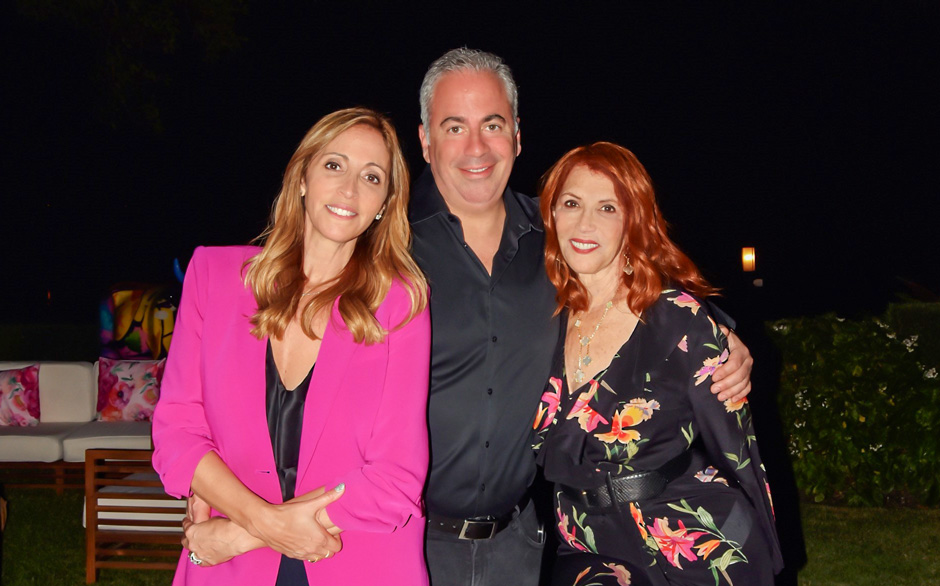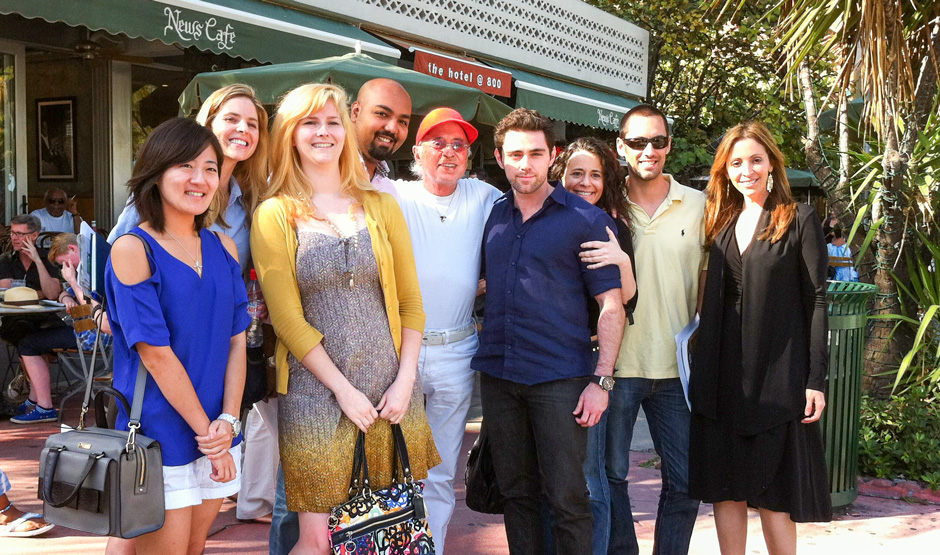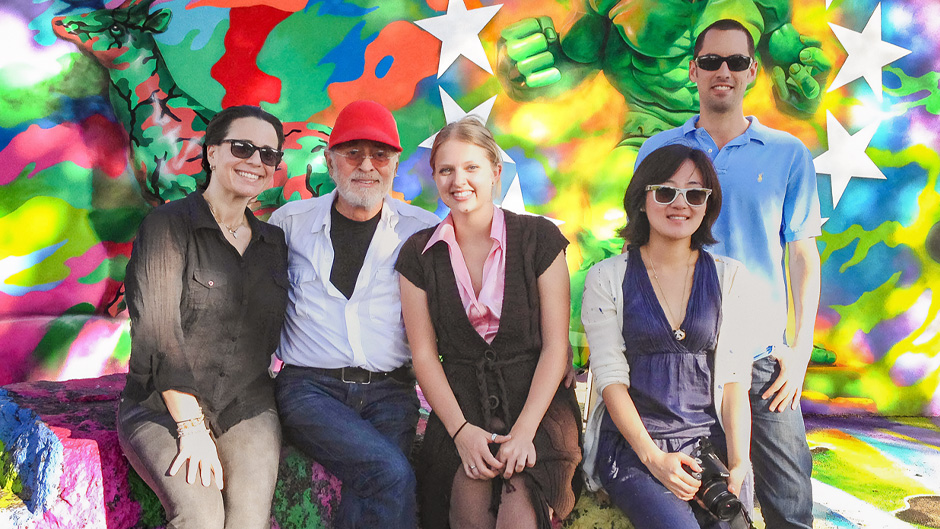Tony Goldman didn’t think of himself as just another real estate developer. Instead, as his daughter Jessica Goldman Srebnick, co-chair of Goldman Properties, recalled, “he saw beauty in the blight” and invested in the revitalization of neglected urban neighborhoods.
Beginning in the 1970s in the former manufacturing district in lower Manhattan, now known as SoHo, Tony Goldman purchased and breathed new life into old buildings where, as his son Joey Goldman said, “the underlying architecture was really special.”
SoHo’s cast-iron former factories, transformed into sought-after loft apartments, restaurants, and much else, and Miami Beach’s iconic art deco hotels, rescued from dereliction, are two of the best-known examples of Tony Goldman’s vision.
“For a young country like America to have incredible architecture meant something to my dad,” Joey Goldman, co-chair of Goldman Properties, said. “He was able to bring [buildings] back to what they were originally designed for or reinvent them in ways that were respectful of the architecture.”

It was Joey Goldman who would bring a downtrodden Wynwood, north of downtown Miami, to his father’s attention in 2005. Wynwood was a completely different type of neighborhood than those for which Tony Goldman had become renowned, devoid of the distinctive, historic architecture that had drawn him to SoHo and South Beach.
Beginning with six buildings in 2007, Tony Goldman had the inspired idea of using the blank warehouse walls as canvases for dynamic graffiti artists and welcomed the world to Wynwood Walls during Art Basel in December 2009. This former warehouse area is now one of Miami’s most popular arts and entertainment districts and a hotbed of creativity.
In conversations with Srebnick, Joey Goldman, and their mother, Janet Goldman, co-founder and chair emerita of Goldman Properties, certain words popped up repeatedly as they talked about their father and husband: creative, visionary, courageous, energetic, generous, optimistic, romantic. “Tony was a romantic developer,” Janet Goldman declared.
“Tony was passionate about blighted areas,” she continued. “His spatial awareness was incredible, and he thought in technicolor. And the worse an area was, the more excited he would get. He would peel back the onion to get to the core of what’s great about a neighborhood; then he would go to work.”
Now, 12 years after Tony Goldman’s death, Janet Goldman is honoring her husband’s vision and legacy with a $1.5 million commitment to establish the Tony Goldman Endowed Director of Real Estate Development and Urbanism at the University of Miami School of Architecture. Her gift is part of the University’s Ever Brighter: The Campaign for Our Next Century. The most ambitious in the institution’s history, the campaign is set to conclude next year, when the University will celebrate its centennial.
The Goldman director will serve as director of the Master of Real Estate Development and Urbanism (MRED+U) program. One of the school’s signature programs, MRED+U is an interdisciplinary program that blends the fundamentals of real estate development and livable community design.
As Rodolphe el-Khoury, dean of the School of Architecture, declared, “Janet Goldman’s gift is impactful—now and forever! It solidifies professor Charles Bohl’s position and stature as the inaugural Tony Goldman Director and enables the program to continue to reach for top-tier talent in his successor by leveraging the endowment and the legendary legacy associated with its name.”
“Our former dean, Elizabeth Plater-Zyberk, first introduced me to Tony, and he was instrumental in shaping our program even before it existed,” recalled Bohl, professor of architecture, MRED+U founding director, and the inaugural holder of the Goldman directorate. “As one of our 12 founding board members, Tony helped bring our ideas for an immersive South Florida student experience to life, hosting a memorable first stop of the inaugural class orientation tour in South Beach.
“When we launched our mentorship program, and we told him how many of the students had requested him as their mentor, he invited all of them to spend an afternoon with him. They learned firsthand about the skill and passion Tony brought to transforming neglected neighborhoods into places people loved.”
Livability and sense of place, concepts espoused in the MRED+U program, were core elements of Tony Goldman’s vision. As Joey Goldman explained, this means, among other things, opening restaurants and other gathering places where people live. “When you have a vision for a neighborhood, you need to think about the whole vision,” he said. “And the hospitality business is key to neighborhood revitalization because the first thing people want to do is go to a great restaurant.
“It’s ingrained in what we do,” Joey Goldman continued. “When we bought properties in Wynwood, we opened a restaurant, Joey’s Wynwood Café. When my father bought a lot of properties in SoHo, he opened a restaurant on Greene Street in [what had been] a garage for garbage trucks. When my dad came to Miami Beach in 1985, he opened a restaurant called Lucky’s to get the ball rolling. The idea is, as my dad would say, ‘feed the neighborhood, and the neighborhood will feed you.’”

And as Srebnick noted, all projects are unique. “We started to develop a model, but that model can change based on the neighborhood,” she said. “What you do in South Beach is different from what you do in Center City, Philadelphia, which [in turn] is different from what you do in Wynwood. Each neighborhood has its own DNA, and my dad was smart enough to recognize that and [seek] the big ideas that can elevate the DNA to another level to create a thriving, world-class destination. That was his secret sauce.”
For her part, Janet Goldman feels honored by the partnership with the School of Architecture, as embodied in the Tony Goldman directorship. “The University of Miami and the people there who knew him really respected and valued Tony,” she reflected. “I felt this was one of the greatest honors I could hope to bestow—to give his name. He wanted to be remembered as a place-maker and for his love of neighborhoods and community.”
“Tony has a living legacy in the many people he inspired and who came to share his passion for place-making, starting with his own family and spreading out through literally hundreds of entrepreneurs, artists, preservationists, architects, small-business owners, city leaders, peers, students, and yes, a few professors he always made time for,” Bohl said. “Now his legacy will continue to inspire future generations of place-makers through the MRED+U program and throughout the University, thanks to the generosity of Janet Goldman and the Goldman family.”
Srebnick echoed her mother’s and Bohl’s sentiments. “My dad wanted people to know that ‘Tony was here’—it’s on his tombstone. Tony continues to be there, and his spirit is still very strong as the guardian of many incredible American neighborhoods,” she said. “The motivation for endowing the position is that we don’t want his lessons to stop with us. Miami is a city that my dad deeply loved—I think he would say that South Beach and Wynwood were two of his crowning achievements. And so, we feel that the University of Miami is the perfect place to continue the legacy.”

